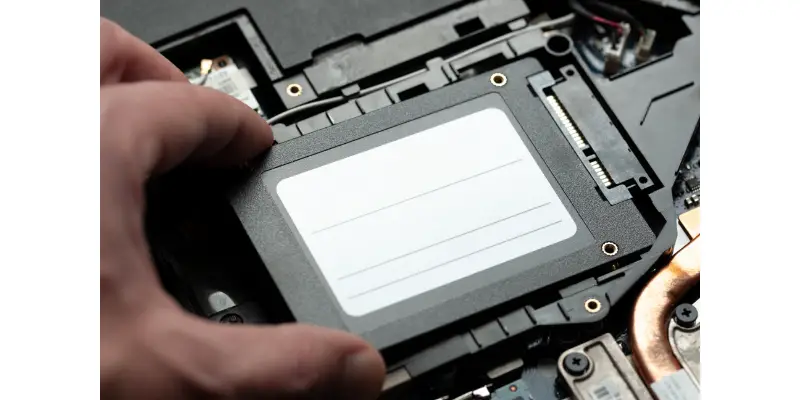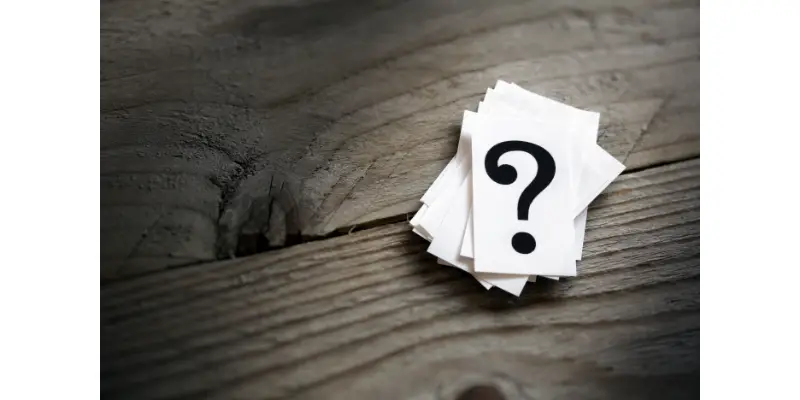Disclaimer: This post may contain affiliate links, meaning we get a small commission if you make a purchase through our links, at no cost to you. For more information, please visit our Disclaimer Page.
If you have an SSD and it’s not showing up in BIOS boot priority, here’s what you need to do to fix it and get it to show up
There are a few reasons your SSD is not showing up in BIOS boot priority. They could be SATA driver issues or problems with your BIOS settings. The solution is to configure the SSD settings in BIOS and keep your driver with up-to-date software.
SSD problems can occur sometimes and although they aren’t hard to fix, they can be confusing. So, in this article, I will explain the easiest and quickest way to configure your BIOS and resolve any SSD issues.
If you have an M.2 SSD, check out this article here. It’s the M.2 version of this article.
Table of Contents
SSD Not Showing Up In BIOS Boot Priority
The BIOS boot priority in a PC is a list of devices and boot managers which have the system software. It is necessary to load and start the operating system on a PC.
Some people prefer the SSD as the system software storage. The SSD or Solid State Drive is a storage device used in computers. They replace the traditional older hard disks because they use a flash-based memory which is faster.
When your PC doesn’t recognize your SSD in the booting process, you should unplug everything except the SSD. When your PC boots up and the system loads, then plug everything back in and it should fix the problem.
How Do I Get My Computer to Recognize a New SSD?
You just bought a brand new SSD and set everything up. You turn your PC on but you realize the PC doesn’t recognize the SSD and it’s not appearing in the system lists. What to do? Well, there are a few solutions to your problem. Here are some:
Unplug Other Drives From Your Computer
Like I mentioned before, unplugging other devices from your computer is one of the solutions. If your SSD isn’t showing up in BIOS or the main operating system interface, you should disconnect all other drives from your PC.
That will help your PC in prioritizing drives and booting up. It should resolve any issues with other drives.
Verify The SSD Shows Up In BIOS
Sometimes issues with your operating system are causing problems with the SSD. One of the ways to verify if the system recognizes your SSD in BIOS is by checking the BIOS menu.
First, you will have to turn your PC off. Then turn your PC back on and keep pressing the F8 key. If you are not sure which key is the shortcut to your PC BIOS, check with your manufacturer.
The BIOS menu should be visible on the screen. Search for your SSD in the list. If your PC recognizes the SSD, it should be visible on the list.
Use a Live Linux Distro To See If SSD Shows Up
A good tip is to use a Live Linux Distro. It’s an operating system from a CD/DVD or a USB flash drive. You can load your operating system from any of these storages. If you think you have an issue with your current operating system, you should create a Live Linux drive and boot your PC from it.
If you are able to see your SSD in the interface, it means you might have a problem with your system.
Format Your SSD Drive
If the SSD connected to your PC is new, you should make sure it is properly formatted and erased. The easiest way is to use the built-in Disk Management tool on your PC.
First, you should press the Windows key + R at the same time. A text box will appear and type diskmgmt.msc in it and press Enter.
Disk Management should appear on your screen and search for your SSD. When you find it on the list, click on it and select Format.
Get the SSD formatted in the NTFS format.
Eject the SSD from your PC and then plug it back in and that’s it.
Update Your Storage Drivers
Old storage drivers can be a cause of many problems and you should get them up-to-date regularly and always install the latest version.
Installing available updates can fix a lot of issues you’re facing.
Open the Device Manager. Expand the Storage Controllers and right-click on the drivers. Choose the Update driver. You can also choose the Search automatically for updated driver software.
How Do I Change My Boot Priority to SSD?
Each time a PC boots, it goes through a series of processes which are named boot sequence. Sometimes the system selects the wrong storage when booting. You can set and configure your list of boot devices and choose their priority and the entire boot sequence.
First, you will have to enter BIOS. As previously mentioned, some PCs have different shortcuts when entering BIOS so make sure to check with your manufacturer.
Once you enter BIOS, go to the BIOS settings menu. Choose Settings and select Boot. Boot options are listed, and you can customize your priority list.
Click on Boot Option #1. A list of available devices will appear and choose SSD from that list. You’ve put your SSD on the priority list. Usually, the hard disk or HDD is preset as a priority.
The boot sequence can be a few seconds or even a few minutes long. That depends on your PC’s configuration. If the system boots from a CD/DVD drive it will take more time than if it’s booted from an HDD or SSD.
Can I See SSD in BIOS But Not In Windows?
You check your BIOS menu and everything might seem fine. It recognizes your SSD with no problems but when the operating system boots up you don’t see your SSD. That usually means you don’t have any issue with the SSD itself but you should definitely format it.
After formatting your SSD, enter the Disk Management in Windows. Look for the SSD in the bottom panel. It is most likely offline. Right-click on it and click Online. After that, assign it a drive letter and that’s it!
Very simple and easy. You don’t have to panic if you don’t see the SSD in Windows, it usually doesn’t mean there is an existing issue with the device.
It also requires AHCI to be enabled. AHCI or Advanced Host Controller Interface is a technical standard that enables the data exchange between the system memory and attached storage devices.
SSD’s have become very popular because they are much faster than older mechanical hard disks. Hard disks make your PC run slower. SSD’s speed PC’s up PCs because they have low read-access time. It is recommended nowadays to use the SSD as the primary drive for operating systems and programs you use the most.
You should buy a larger external HDD for storing other data such as documents and pictures.
HDDs are cheaper than SSDs but they are inferior.
Sometimes, you can run into several issues with your SSD and PC. If the PC doesn’t recognize your SSD your should make sure that the SSD is formatted and erased.
Unplugging every other device and storage and only leaving the SSD plugged in has been proven to resolve the issue. You can plug all other devices after your system bootup and everything should work fine.
One of the most important things is to keep your drivers updated to the latest version. With each update, some bugs and difficulties are resolved and if you don’t update the drivers regularly they will not function properly.
One of the important things is the connection of your SSD and BIOS. If the SSD is visible in BIOS, then the issue is fixable. Most issues with SSD recognition that occur are not complicated. You can find a solution with a few simple steps using the Disk Management tool on your PC which is very simple to use.
In case the problem persists, I suggest you contact your technical support.


